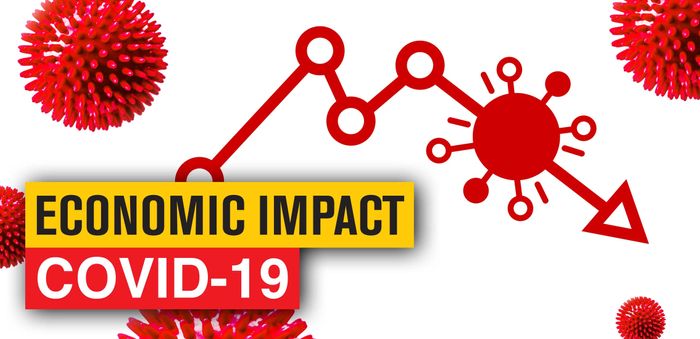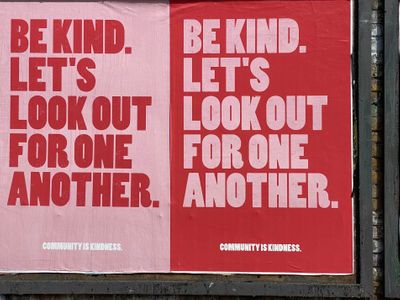Planning for the new normal is not hopelessly difficult, it just seems that way. Planning is a strategic skill that combines historical data, data on future trends, and lessons learned. Instead, we have fuzzy data on our immediate past, varying models for our future and lessons only partially learned.
How to Return to the 'New Normal' for Nonprofit Organizations
Cathleen Armstead, Ph.D.

Planning is needed for the immediate aftermath of the crisis and our first return to work and community life. Planning is necessary to prioritize our resources and ensure the sustainability of non-profit organizations and Head Start programs.

Returning to the “New Normal”
Public health experts and well-respected economists suggest the
following model for returning to civil society and work: 1) the most stringent restrictions (work with social distancing) are eased while many are kept in place (movie theaters, sporting events). This easing of restrictions will be followed by secondary outbreaks, disruptions, and renewed restrictions to flatten the curve. It is likely this cycle that will likely recur until a vaccine is successfully created. At that time, we will return to the another 'new normal’ as a stronger, more resilient community
Before COVID-19, the United States had the longest period of an expanding economy with a low unemployment rate of 3.3%. However, the overall unemployment rate masked the racial disparities. The Hispanic population experienced a 4.4% unemployment rate, while African Americans had almost 6% unemployment. There were sharp economic inequalities between the elite and the 99% - the rest of us. There were equally stark disparities between the professional class and the working class. These inequalities were thrown into sharp relief with the COVID-19 pandemic.

Although the virus does not discriminate, the existing inequalities ensured that the virus had a differential impact on poor people and communities of color. Poor people and communities of color are more likely to live in densely populated communities with fewer opportunities to engage in social distance. Moreover, both poor people and communities of color often have less available sources of nutritious and healthy food, space to engage in physical activity, and most importantly less access to health insurance and health care.
Rethinking: Our Population
Planning for a return to work and civil society involves determining how many people will need to serve, what needs they will have, how many new staff to hire our organization, what needs will they have, what type of organizational structure will provide the best services, and where to find additional resources.
Current unemployment claims have reached over 30 million, a number that likely under-counts actual unemployment. The Federal government has passed legislation providing stimulus checks to families and expanding the amount of unemployment relief, but estimates indicate that fewer than 50% of families have received stimulus relief and state unemployment systems are overwhelmed by the enormous need.
The Center on Poverty and Social Policy has initial forecasts for an increase in poverty, providing a model that correlates rising unemployment with rising and poverty. The worst-case scenario argues that an increase in the unemployment rate to 30%, which persists through the year (an estimate from Federal Reserve), will result in an increase of poverty from 12.4% to 18.9% or an increase of more than 21 million individuals, mostly working-age adults and children. The hardest hit will be endured by our Hispanic and African American communities.
If unemployment rates rise to 10% (comparable to the Great Recession of 2008) poverty rates would increase to 15%. Determining if your poverty rate will be closer to 10% or 30% depends on factors specific to your community such as the typical jobs in your community. Jobs with face-to-face interactions have been the hardest hit – including traditional retail, restaurants, participation the food chain, and other service industries. Such jobs typically employ poorer individuals. Even if poverty rates overall settle at 10%, these communities will likely have much higher unemployment and poverty rates.
At the risk of stating the obvious, non-profit social service organizations and Head Start programs should plan on serving more people with more needs, including the immediate consequences and acute trauma of COVID-19 and the indirect costs of social distancing.
Rethinking Needs: Emphasizing Health
All our families will be more financially vulnerable; more than a third will be newly poor. The instability of the economy will result in familial instability and additional stress. The uncertainty of civil society will result in unease and additional stress. The added layer of racism and anti-immigrant backlash will exacerbate fears. The rise in domestic violence rates and child abuse means more families will experience acute trauma.

Health needs will be paramount. If there is one lesson to be learned from the pandemic, it is that healthy individuals are the cornerstone of a healthy society; a threat to health anywhere is a threat to health everywhere. How do non-profit organizations, with differentiated missions and limited resources begin to address health and healthy lifestyle choices?
Non-profit organizations and Head Start programs can ensure there is a health coordinator on staff to help families navigate the application and choices available under the Affordable Care Act. Health coordinators can coordinate partnerships with community health clinics for preventative services to families. Health coordinators can create partnerships with local farmers markets to provide access to fruits and vegetables while advocating for limits on Dollar Stores in poorer communities. Other important partnerships include the local YMCA to provide free wellness and yoga classes along with swimming lessons for children, or partnerships with local community colleges for dental hygiene and mindfulness training. Non-profits will need to be as mindful of health as they are of housing and food.
Non-profits need to be savvy enough to assist community health centers apply for available grants and leverage funding. The Society for Nonprofit Organizations has frequent listings for health and health care related grants.
Rethinking the Organization: Technology
Two important aspects of your organization need to be rethought in the aftermath of COVID-19: the infrastructure and trauma informed care. It is not longer wise to have multiple families wait in a room with chairs and coffee to complete an application. Moving to an on-line application makes sense. Except many of our families do not have the broadband width. Importantly, many of our applications are long and complicated with multiple forms of documentation.
Our technological systems may not be equipped to handle the volume of applications. Invest in your technology and your policies and procedures to streamline the application process. A one-page application can often suffice with the appropriate documentation. Determine if its possible to have an initial application accessible with cell phone technology. Our families do have cell phones. At the very least have accessible kiosks separated by six feet, or better yet in public libraries. Given the multiple needs of families, this may seem less a priority. However, it may mean the difference for a sustainable nonprofit to serve the community for the long haul. Funding such an investment in infrastructure may be difficult, but many grant-makers, including the Office of Head Start, have funds for one-time quality improvements.



Rethinking the Structure: Trauma-Informed Organization
Beyond investing in the infrastructure, the organization may need to move to a trauma-informed organization. A trauma-informed organization is not simply a series of initiatives designed to help families work through and heal trauma (although that is necessary). A trauma-informed organization requires a comprehensive effort on the part of all staff to understand types of trauma and its impact on mental and physical health as well on social connections.
The approach requires a commitment to fostering safety and stability at the organization and in families’ lives and a corresponding commitment to compassion and consistency. It is an approach that moves beyond compliance with regulations, procedures, and documentation. A trauma informed organization is culturally informed and humble, it is focused on resilience and recovery. Finally, there is an emphasis on collaboration and empowerment. It is not about saving or fixing clients, it is about working with people who create their own goals and reach their potential.
Trauma-informed organizations routinely screen for trauma exposure, including both family and community-level trauma. Such an organization recognizes trauma-related symptoms (including unhealthy lifestyle choices) and understands the impact of trauma on all aspects of well-being. The organization will focus on strengthening protective factors and will strengthen resilience. Importantly, trauma informed organizations encourage an environment of care for clients and staff – and model self-care.
Resources:
The following resources are especially helpful as we contemplate returning to work and civil society:
Next Steps:
I will be publishing two additional posts on this topic next week: 1) finding funding and 2) transforming your agency into a trauma-informed organization.
Conclusion:
In this age of uncertainty and trial it is imperative that the social service sector remain calm as we plan for a return to a more resilient community.



